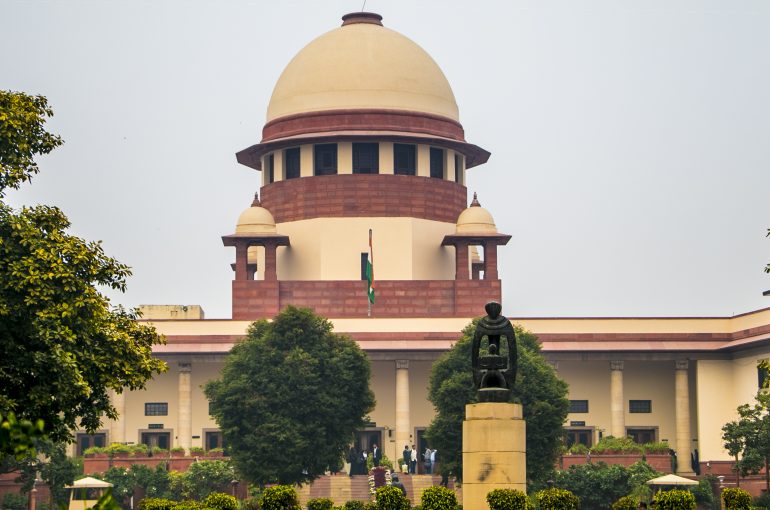WHEN MEMORY FALTERS, JUSTICE MUST NOT: THE SUPREME COURT ON WITNESS CREDIBILITY

WHEN MEMORY FALTERS, JUSTICE MUST NOT: THE SUPREME COURT ON WITNESS CREDIBILITY
INTRODUCTION
The credibility of witnesses forms the backbone of every criminal trial. Yet, in many cases, witnesses are hastily branded as “hostile” for small differences in their statements. In a recent and noteworthy Judgment, the Supreme Court of India in Shivkumar @ Baleshwar Yadav v. State of Chhattisgarh [Special Leave Petition (Criminal) No.14625 of 2024)] strongly criticized the growing tendency of declaring witnesses “hostile” merely for minor inconsistencies or variations in their statements. The Court observed that such casual practice undermines the spirit of fair trial and the evidentiary value of witness testimony.
Emphasizing that minor contradictions are natural and inevitable in human recollection, the Bench reminded that the purpose of a criminal trial is the discovery of truth—not the mechanical discrediting of witnesses. The Judgment highlights the need for sensitivity, caution and judicial balance while dealing with witness depositions, particularly in serious offences under the Indian Penal Code, the POCSO Act and the SC/ST (Prevention of Atrocities) Act.
BRIEF FACTS
The case arose from an incident in Surajpur District, Chhattisgarh, where a 13-year-old girl went missing after leaving home to deliver food to her grandfather. The investigation revealed that the Accused, Shivkumar alias Baleshwar Yadav—known to the victim’s family—had lured the minor on the pretext of marriage, taken her away, and sexually assaulted her.
Based on the evidence gathered, he was charged under multiple provisions of the Indian Penal Code (Sections 363, 366, 376, and 506), the Protection of Children from Sexual Offences Act (POCSO), and Section 3(2)(v) of the Scheduled Castes and Scheduled Tribes (Prevention of Atrocities) Act, 1989.
The Trial Court convicted the Accused and sentenced him to life imprisonment, which was upheld by the Chhattisgarh High Court. Dissatisfied, the Accused approached the Supreme Court through a Special Leave Petition challenging both the conviction and the manner in which the evidence was appreciated during trial.
ISSUES OF LAW INVOLVED
The Supreme Court considered several legal issues that have wider implications for criminal jurisprudence:
1) Whether the practice of declaring witnesses hostile for minor contradictions is consistent with Section 154 of the Indian Evidence Act.
2) Whether school admission records and oral statements constitute reliable proof of age for invoking provisions of the POCSO Act.
3) Whether the prosecution must establish a caste-based motive, or if the accused’s knowledge of the victim’s caste is sufficient post the 2016 amendment.
4) To what extent courts should tolerate minor discrepancies while assessing witness credibility.
REASONING BEHIND THE JUDGMENT
The Supreme Court upheld the conviction but expressed strong disapproval of how one of the prosecution witnesses—the victim’s father—had been declared hostile. The Court noted that the father’s statement contained only a minor variance from his earlier version, which did not amount to hostility or untruthfulness. The Bench observed that mere inconsistencies or memory lapses, especially in emotionally charged cases, cannot form the basis for declaring a witness hostile.
The Court reaffirmed that declaring a witness hostile is an exceptional measure, not a routine procedural tool. It should only be invoked when a witness’s testimony clearly indicates deliberate deviation or an attempt to mislead the court.
On the other aspects, the Court found that the victim’s date of birth—recorded in the school register and corroborated by oral testimony—proved she was a minor, bringing the offence squarely under POCSO. The medical and forensic evidence further supported the occurrence of sexual assault.
Regarding the SC/ST Act, the Court clarified that post-2016 Amendment, it is enough to show that the accused knew the victim belonged to a Scheduled Caste; no further proof of caste-based motive is required. Since the accused was a neighbour and well acquainted with the family, knowledge of caste could be safely presumed.
ANALYSIS OF THE JUDGMENT
The Supreme Court’s observations in this case highlight a crucial dimension of criminal procedure — the delicate balance between prosecutorial discretion and judicial oversight. The Court’s criticism of the indiscriminate use of the “hostile witness” tag under Section 154 of the Evidence Act underscores the need for greater judicial prudence in evaluating inconsistencies. Minor discrepancies are inherent to human testimony and should not be equated with falsehood or animosity.
The ruling strengthens the jurisprudence surrounding witness credibility and ensures that the focus remains on the substance of evidence rather than peripheral inconsistencies. Moreover, the Court’s clarity on proving the age of a minor under the POCSO Act and its interpretation of “knowledge” under Section 3(2)(v) of the SC/ST Act will aid in harmonizing trial court practices. In essence, this Judgment serves as a corrective reminder that procedural fairness is indispensable to the pursuit of justice.
CONCLUSION
The Supreme Court’s Judgment in Shivkumar @ Baleshwar Yadav v. State of Chhattisgarh is a significant step towards ensuring fairness in criminal trials. By condemning the casual practice of declaring witnesses hostile, the Court has protected both the credibility of witnesses and the integrity of the justice process.
This decision reminds prosecutors and judges that small inconsistencies are part of human testimony and should not be exaggerated into hostility. At its core, the ruling is a call to maintain balance — to pursue justice with seriousness, but never at the cost of fairness.
Contributed by-
SUMIT SAXENA
Advocate
Please log onto our YouTube channel, The Indian Lawyer Legal Tips, to learn about various aspects of the law. Our latest Video, titled “Tips for Legal Practice in India | Build a Successful Law Career 2025 | Advocate Sushila Ram Varma|” can be viewed at the link below:
https://youtu.be/DHnNWeptB5k





































Leave a Reply